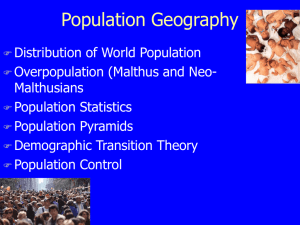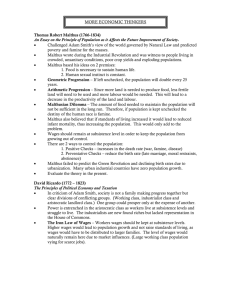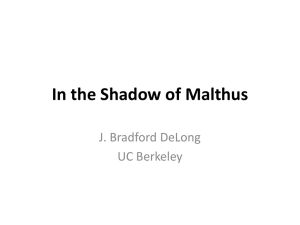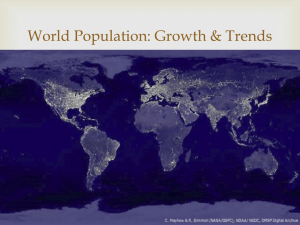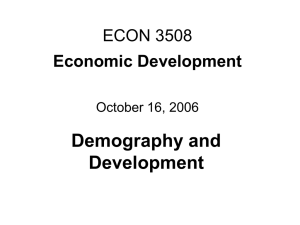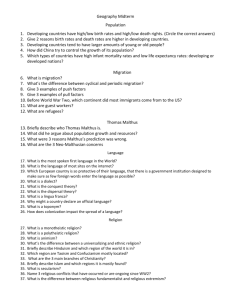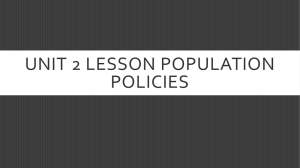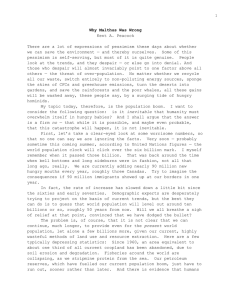Population Theorists
advertisement
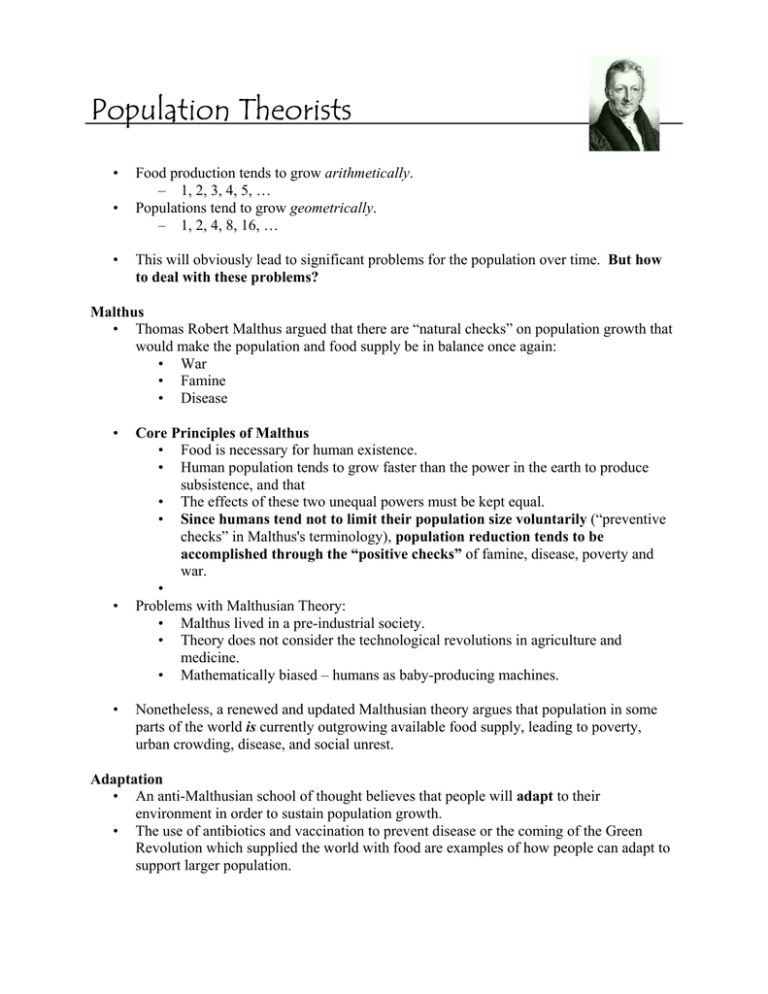
Population Theorists • • • Food production tends to grow arithmetically. – 1, 2, 3, 4, 5, … Populations tend to grow geometrically. – 1, 2, 4, 8, 16, … This will obviously lead to significant problems for the population over time. But how to deal with these problems? Malthus • Thomas Robert Malthus argued that there are “natural checks” on population growth that would make the population and food supply be in balance once again: • War • Famine • Disease • • • Core Principles of Malthus • Food is necessary for human existence. • Human population tends to grow faster than the power in the earth to produce subsistence, and that • The effects of these two unequal powers must be kept equal. • Since humans tend not to limit their population size voluntarily (“preventive checks” in Malthus's terminology), population reduction tends to be accomplished through the “positive checks” of famine, disease, poverty and war. • Problems with Malthusian Theory: • Malthus lived in a pre-industrial society. • Theory does not consider the technological revolutions in agriculture and medicine. • Mathematically biased – humans as baby-producing machines. Nonetheless, a renewed and updated Malthusian theory argues that population in some parts of the world is currently outgrowing available food supply, leading to poverty, urban crowding, disease, and social unrest. Adaptation • An anti-Malthusian school of thought believes that people will adapt to their environment in order to sustain population growth. • The use of antibiotics and vaccination to prevent disease or the coming of the Green Revolution which supplied the world with food are examples of how people can adapt to support larger population. • Because of examples such as these, the Adaptation Theory has found greater acceptance in modern times. • Core Principles of the Adaptation Theory • Food is necessary for human existence. • Human population tends to grow faster than the power in the earth to produce subsistence, and that • These two unequal powers may made equal through human efforts. • Since humans tend not to limit their population size voluntarily, we must find ways to grow more food, and prevent disease in order to sustain the population. Demographic Transition Model • Getting control of birth and death rates can be illustrated through the Demographic Transition Model – 1930s American Warren Thompson – Countries are at different stages… all countries will eventually pass through all stages – Shows dynamics of population change over time – Based on Western European experience – Can less developed regions achieve demographic transition today given new circumstances? 50 Phase 1 Phase 2 Phase 3 Birth rate 40 Death rate 30 20 Natural increase gap 10 0 TIME (in years) Phase 4 Phase 5 Descriptive PHASE ONE: Birth rates and death rates are high. The natural population grows slowly. increase gap is small - PHASE TWO: Death rate declines and birth rate remains high. The natural increase gap becomes larger – population explosion. PHASE THREE: Birth rate begins to decline and the death rate remains low. The natural increase gap narrows – population explosion slows. PHASE FOUR: Birth rate and death rate tend to be low and steady. The natural increase gap is small – slow population growth. PHASE FIVE? Explanative • PHASE ONE: “Pre-Modern Era” – Little access to birth control – High infant mortality rate so parents have more children to compensate – Children needed to work the land – High death rate due to disease, famine, lack of public health – Religious or cultural basis for having large families – • PHASE TWO: “Industrializing Era” – Improvements in health care, sanitation, and water supply – Production of food rises – Transportation and communication improve movement of food and medical supplies – Decrease in infant mortality – • No country is really in stage one. Many developing countries are currently in stage 2 or 3. PHASE THREE: “Mature Industrial” – Increased access to birth control – Lower infant mortality rate realized – less need to have a large number of children – Fewer labourers needed due to mechanization – Change of desires to material possessions from large families – Equality of women – Many developing countries are currently in stage 2 or 3. • PHASE FOUR: “Post-Industrial” – Steady population – • Many developed countries are currently in stage 4. PHASE FIVE – Not part of original model – Many developed countries are seeing declining rates of natural increase and are focusing on immigration to fill jobs – A few developed countries are in stage 5. (Germany, Italy, Spain, Russia, Japan) Time
